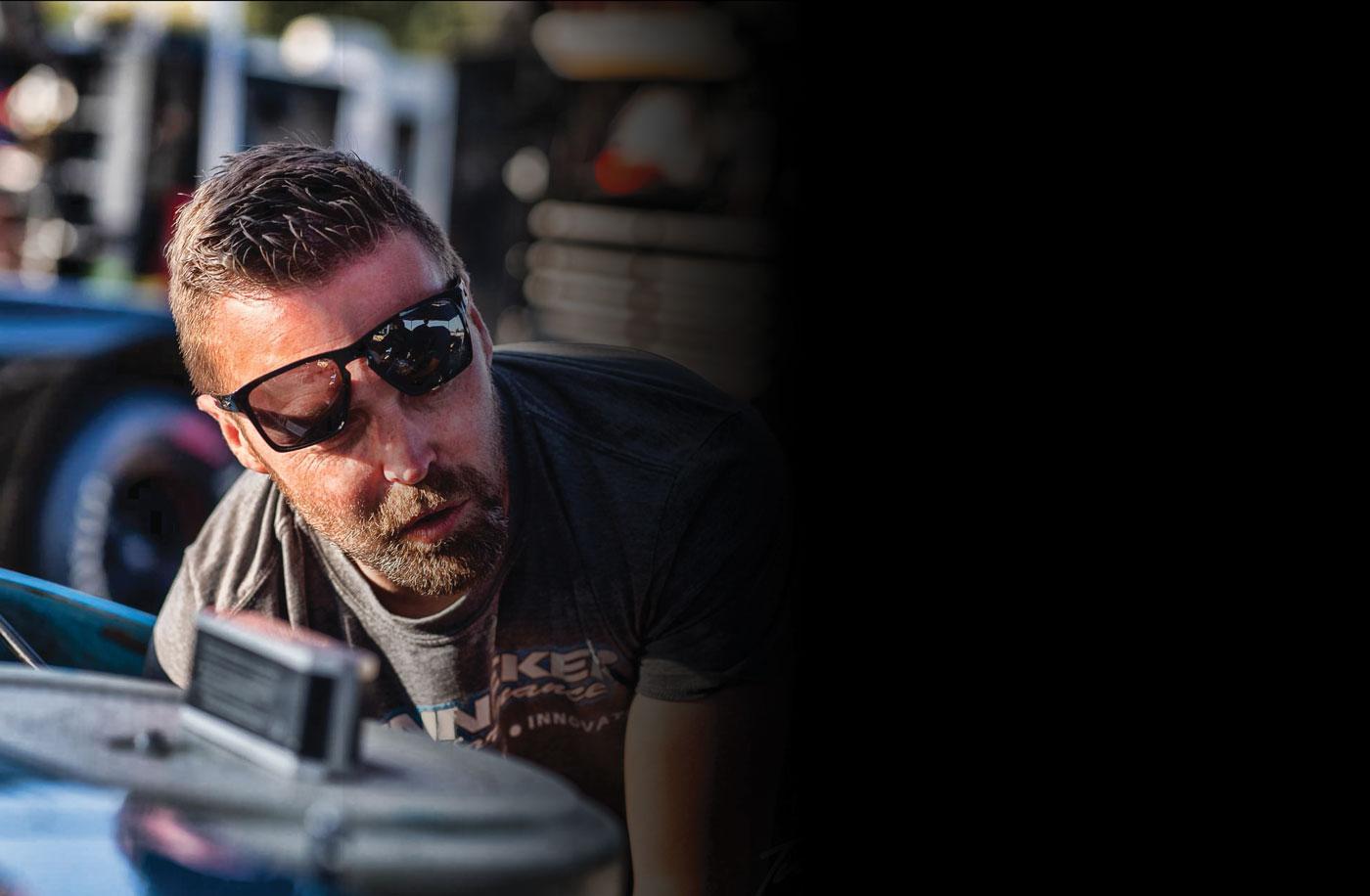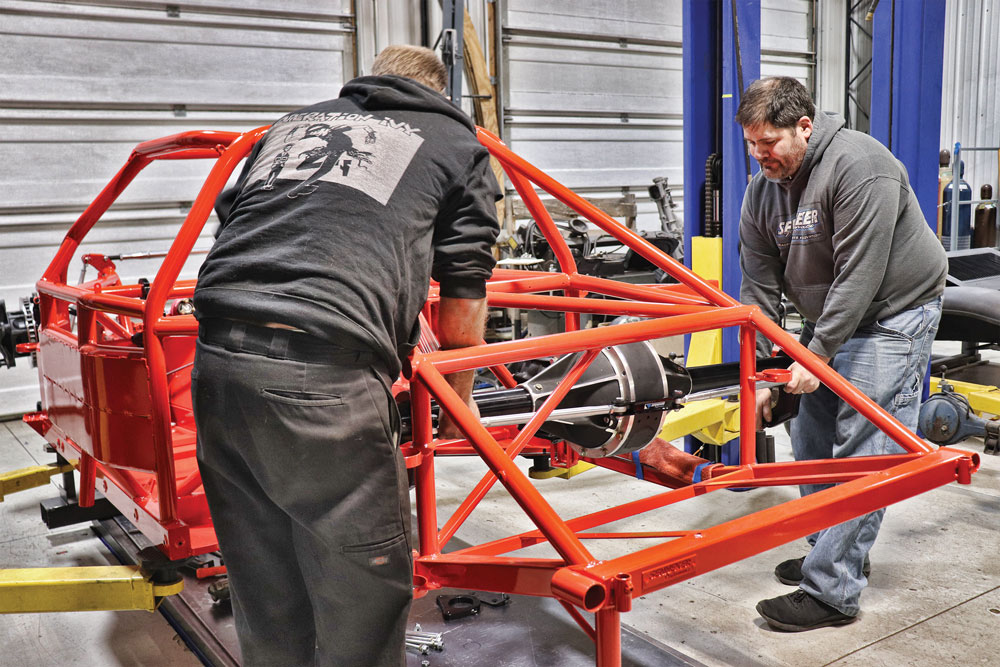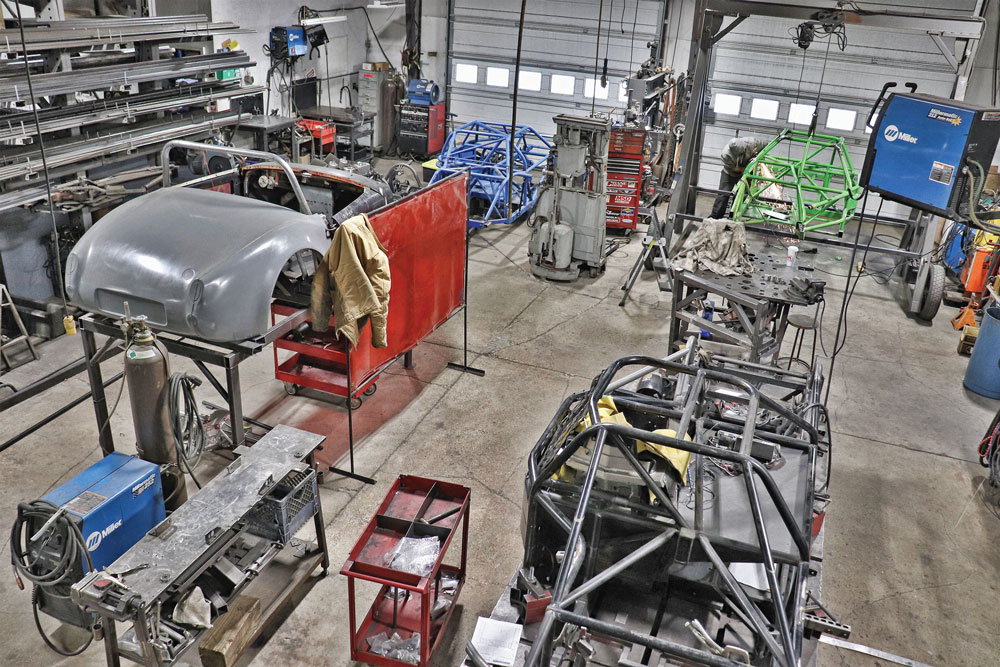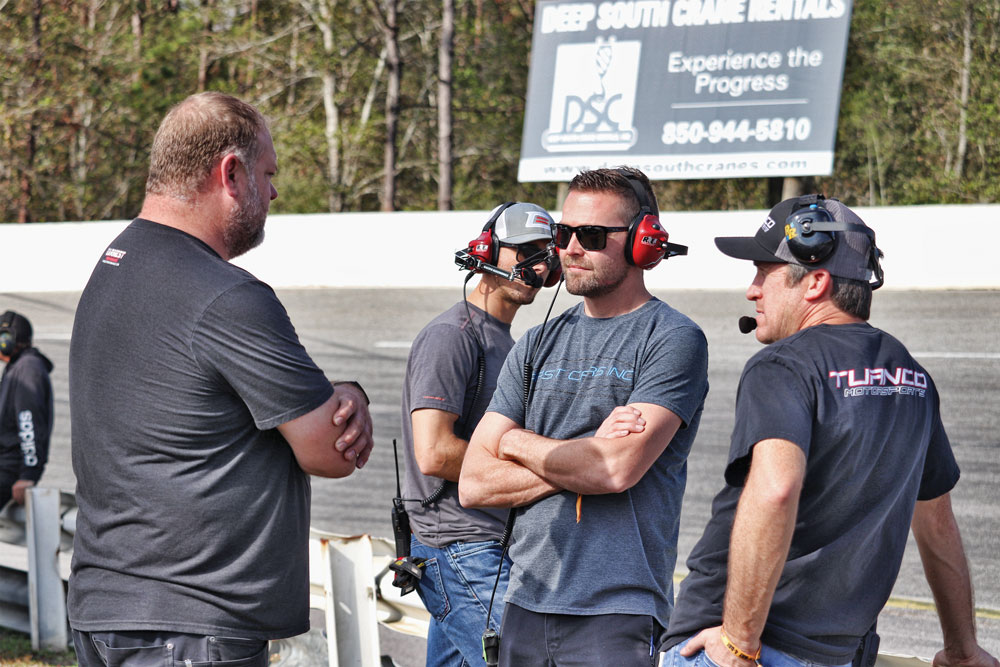Business Profile: Senneker Performance

Attention to detail and out-of-the-box thinking have resulted in more than 100 victories for customers of this Michigan-based shop since the company opened in 2008. Steadfast support and its ability to adapt has kept the builder at the forefront of Outlaw and Super Late Model circle track racing.
When Terry Senneker decided to turn his self-described side hustle into a full-time business back in 2008, he’d already amassed a wealth of experience competing in—and wrenching on—Outlaw cars. In many ways the shop was a natural progression for Senneker. He’d worked for several different chassis manufacturers over the years, and eventually he began developing his own solutions for shortcomings that he identified in the suspension systems of his cars.
“I did a lot of dumpster diving for other peoples’ parts, basically fixing their throwaways,” he recalled. “For a while I was just dabbling in it on the side when I could find the time. I had a couple of customers who wanted me to build cars, so I would work on those at night. At a certain point I felt like I had a big enough workload that I could just focus on doing this, so I decided to give it a try.”
Turning Senneker Performance into a full-fledged shop was a fairly hassle-free transition, Senneker said, because most of the typical obstacles that face new small business owners had already been addressed. “I was fortunate enough to be able to run the shop from my home. We had a pole barn in the backyard, and I already had all of the welding and fabricating equipment I needed to get started. I didn’t have to take out any bank loans or anything like that, so that made it a lot easier to get the ball rolling.”
In its earliest incarnation, Senneker Performance was a partnership, but differing priorities convinced Senneker and his business partner to part ways amicably. “We started with a couple of IMCA modified builds and a few Outlaw cars, as well as some work on sportsman cars, anything we could do to make some money,” he said. “But we soon realized that we had different goals: I wanted to grow a business, and he wanted to continue doing this as more of side hustle. We parted ways on friendly terms, and that’s when I really started focusing on what I needed to do to make this a viable operation.”
Senneker set to work developing the fixtures and jigs he needed, and shortly thereafter, several Outlaw customers jumped on board. “JR Roahrig and his son Tyler were some of the first customers we had that really started winning,” he explained. “My success at the track in my own car helped the business to a tangible degree, but when customers began taking podiums, that took it to another level. It really solidified this shop as a business and helped us gain some momentum.”

Senneker Performance soon became a dominant force within the Midwest Outlaw ranks. “It reached a level where it was basically a case of strength in numbers,” Senneker said. “We had premier teams in our cars, and by 2012 or so, it got to the point where about half of the field was running our cars on any given night.”
These days the company operates out of a 5,000-square-foot facility in Wayland, Michigan, which puts it about a half-hour’s drive from both Berlin Raceway and Kalamazoo Speedway. The shop has nine stalls and six car hoists for its half-dozen technicians to utilize, along with a wide variety of fabrication equipment that includes MIG and TIG welders, vertical and horizontal band saws, a manual lathe and a manual mill. Since tuning and setup is such an intrinsic part of chassis building, Senneker Performance also has a pull-down rig to simulate suspension behavior at speed, along with a shock dyno and the requisite data acquisition equipment. While the company outsources its machine work, all of the engineering is done in-house.

“Most of the folks we’ve hired over the years have been through word of mouth,” Senneker said. “We haven’t had a high turnover rate, and we’re fortunate in that way because it’s a very specialized market. We can’t just put out an ad for a general welder or fabricator. Being a chassis builder makes us kind of a jack-of-all-trades, yet the skills are specific to this kind of work. We’re hanging the bodies on the cars, we’re wiring them up and we manufacture most of the suspension components that we use.”
Recent years have seen the shop shift its focus beyond Outlaw cars, a move that Senneker said came from necessity. “Early on it made a lot of sense because that’s the kind of racing I was doing at the time, and it was very popular. There were 30 or more cars at any given event we went to. But at a certain point that market started to get saturated with our cars, and the Outlaw car counts started to level off. It got to a point where we had so many Outlaw cars out there, there wasn’t really a market for brand new ones. It kind of turned into a used-car market after that.” As a result, Senneker Performance began to shift its attention toward Super Late Model racing.
Along with its chassis builds, the company services and repairs the cars, and it can adapt its components to existing chassis. For instance, if a customer has another builder’s car and they don’t want to invest in a brand new car, the shop can adapt its front and rear suspension systems on the car.
“We’ll take on just about anything, whether it’s repairs, re-working an existing chassis, hanging a body on someone else’s chassis, or just doing setup work,” said Senneker. “Our flexibility has been really important to our success.”
It’s a sentiment shared by Mike Garvey, a longtime Senneker Performance customer who has been campaigning cars in various short-track disciplines for nearly four decades. “We’re always trying to keep an eye on what’s going on around us. At a certain point, I started to notice that the Senneker cars were running really well. What really impressed me was that Terry was thinking completely outside the box. Most of these cars are very similar to one another, but Senneker designed a totally different suspension, and I really liked that. With a Senneker car, we kind of have to forget about the other cars when it comes to what we’re doing. These are completely their own thing. We saw a lot of success once we started racing with them, and we also became really good friends with those guys along the way.”

These days Garvey spends more time coaching and consulting young racers, and he told us that he points them toward Senneker’s shop whenever applicable. “We’ve been really happy with Terry’s work and the support that the shop provides,” he explained. “They build the best cars out there, and they provide consistent, repeatable performance. But importantly, Terry’s team is also easy to work with. If you have something you want to try, they’re receptive to new ideas.”
Senneker pointed out that being willing to adapt to change is crucial if the goal is to stay competitive. “Some manufacturers take a ‘Gen 1’ and ‘Gen 2’ type of approach to chassis building, but our philosophy has been more about tweaking them as we go. Instead of just establishing these specific generational templates, we want to be able to react to rule changes and adapt to the times. It’s more of a progression.” Rather than investing all of its engineering effort into developing and producing a new chassis every few years, for Senneker Performance it’s about making incremental changes to its existing designs on a regular basis in order to improve the breed.

Taking a hands-on approach to development right from the start helped the company establish a larger engineering philosophy for the products it produces. “For me this has very much been about doing it myself—being in the seat and being able to feel how the changes we are making are affecting the car,” Senneker said. “Rather than approaching it from the perspective of a typical business owner, I want to be able to provide first-hand information. That’s especially important with a racing business. If you’re trying to get feedback from a customer and interpret what they want out of the race car, you need to actually be there working on the cars. You need to understand what’s going on from the driver’s perspective.”
 MEMBERSHIP LOGIN
MEMBERSHIP LOGIN JOIN PRI
JOIN PRI


